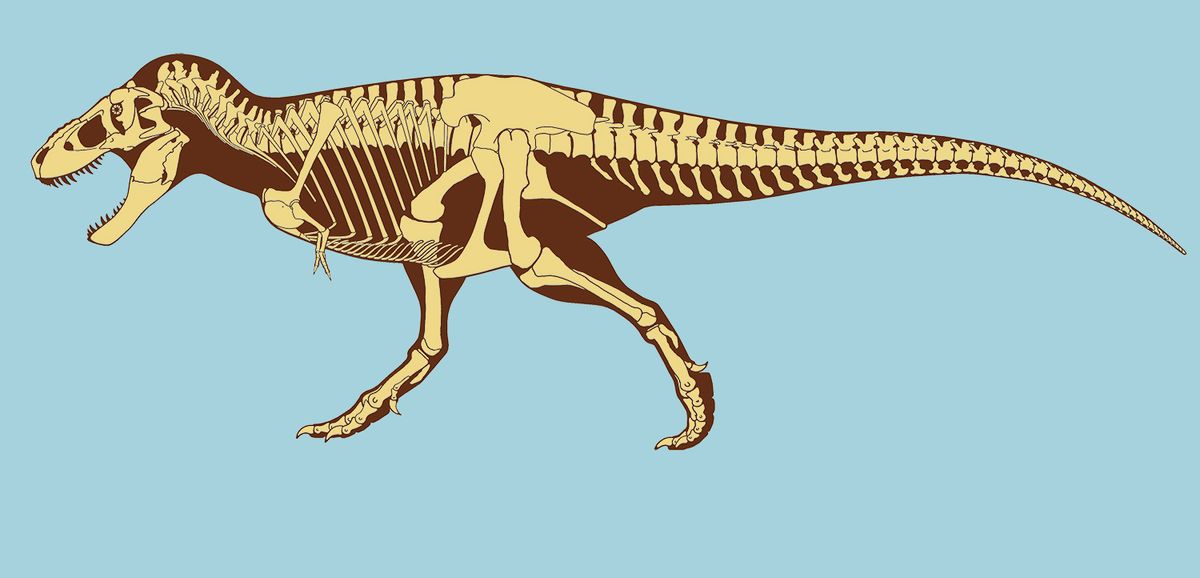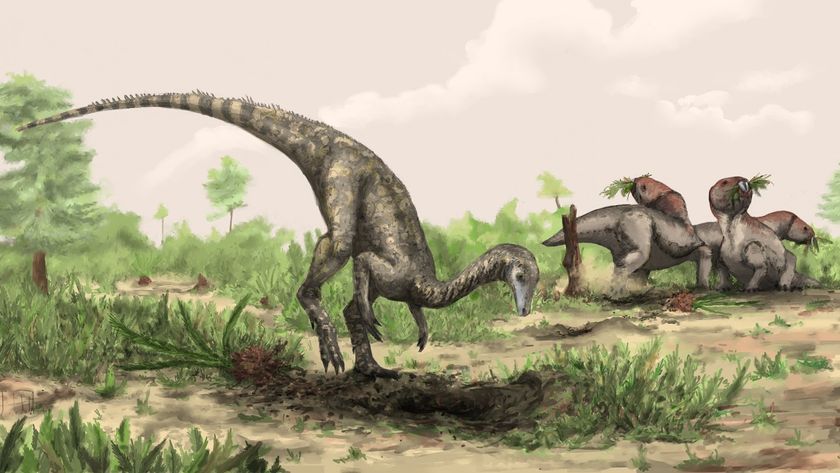Controversial T. Rex Soft Tissue Find Finally Explained

The controversial discovery of 68-million-year-old soft tissue from the bones of a Tyrannosaurus rex finally has a physical explanation. According to new research, iron in the dinosaur's body preserved the tissue before it could decay.
The research, headed by Mary Schweitzer, a molecular paleontologist at North Carolina State University, explains how proteins — and possibly even DNA — can survive millennia. Schweitzer and her colleagues first raised this question in 2005, when they found the seemingly impossible: soft tissue preserved inside the leg of an adolescent T. rex unearthed in Montana.
"What we found was unusual, because it was still soft and still transparent and still flexible," Schweitzer told LiveScience.
T. rex tissue?
The find was also controversial, because scientists had thought proteins that make up soft tissue should degrade in less than 1 million years in the best of conditions. In most cases, microbes feast on a dead animal's soft tissue, destroying it within weeks. The tissue must be something else, perhaps the product of a later bacterial invasion, critics argued.
Then, in 2007, Schweitzer and her colleagues analyzed the chemistry of the T. rex proteins. They found the proteins really did come from dinosaur soft tissue. The tissue was collagen, they reported in the journal Science, and it shared similarities with bird collagen — which makes sense, as modern birds evolved from theropod dinosaurs such as T. rex.
The researchers also analyzed other fossils for the presence of soft tissue, and found it was present in about half of their samples going back to the Jurassic Period, which lasted from 145.5 million to 199.6 million years ago, Schweitzer said.
Sign up for the Live Science daily newsletter now
Get the world’s most fascinating discoveries delivered straight to your inbox.
"The problem is, for 300 years, we thought, 'Well, the organics are all gone, so why should we look for something that's not going to be there?' and nobody looks," she said.
The obvious question, though, was how soft, pliable tissue could survive for millions of years. In a new study published today (Nov. 26) in the journal Proceedings of the Royal Society B: Biological Sciences, Schweitzer thinks she has the answer: Iron.
Iron lady
Iron is an element present in abundance in the body, particularly in the blood, where it is part of the protein that carries oxygen from the lungs to the tissues. Iron is also highly reactive with other molecules, so the body keeps it locked up tight, bound to molecules that prevent it from wreaking havoc on the tissues.
After death, though, iron is let free from its cage. It forms minuscule iron nanoparticles and also generates free radicals, which are highly reactive molecules thought to be involved in aging.
"The free radicals cause proteins and cell membranes to tie in knots," Schweitzer said. "They basically act like formaldehyde."
Formaldehyde, of course, preserves tissue. It works by linking up, or cross-linking, the amino acids that make up proteins, which makes those proteins more resistant to decay.
Schweitzer and her colleagues found that dinosaur soft tissue is closely associated with iron nanoparticles in both the T. rex and another soft-tissue specimen from Brachylophosaurus canadensis, a type of duck-billed dinosaur. They then tested the iron-as-preservative idea using modern ostrich blood vessels. They soaked one group of blood vessels in iron-rich liquid made of red blood cells and another group in water. The blood vessels left in water turned into a disgusting mess within days. The blood vessels soaked in red blood cells remain recognizable after sitting at room temperature for two years. [Paleo-Art: Illustrations Bring Dinosaurs to Life]
Searching for soft tissue
Dinosaurs' iron-rich blood, combined with a good environment for fossilization, may explain the amazing existence of soft tissue from the Cretaceous (a period that lasted from about 65.5 million to 145.5 million years ago) and even earlier. The specimens Schweitzer works with, including skin, show evidence of excellent preservation. The bones of these various specimens are articulated, not scattered, suggesting they were buried quickly. They're also buried in sandstone, which is porous and may wick away bacteria and reactive enzymes that would otherwise degrade the bone.
Schweitzer is set to search for more dinosaur soft tissue this summer. "I'd like to find a honking big T. rex that's completely articulated that's still in the ground, or something similar," she said. To preserve the chemistry of potential soft tissue, the specimens must not be treated with preservatives or glue, as most fossil bones are, she said. And they need to be tested quickly, as soft tissue could degrade once exposed to modern air and humidity.
Importantly, Schweitzer and her colleagues have figured out how to remove the iron from their samples, which enables them to analyze the original proteins. They've even found chemicals consistent with being DNA, though Schweitzer is quick to note that she hasn't proven they really are DNA. The iron-removing techniques should allow paleontologists to search more effectively for soft tissue, and to test it when they find it.
"Once we can get the chemistry behind some of these soft tissues, there's all sorts of questions we can ask of ancient organisms," Schweitzer said.
Editor's Note: This article was updated at 2pm Eastern Nov. 28 to correct unclear language about proteins and DNA.
Follow Stephanie Pappas on Twitter and Google+. Follow us @livescience, Facebook & Google+. Original article on LiveScience.

Stephanie Pappas is a contributing writer for Live Science, covering topics ranging from geoscience to archaeology to the human brain and behavior. She was previously a senior writer for Live Science but is now a freelancer based in Denver, Colorado, and regularly contributes to Scientific American and The Monitor, the monthly magazine of the American Psychological Association. Stephanie received a bachelor's degree in psychology from the University of South Carolina and a graduate certificate in science communication from the University of California, Santa Cruz.


